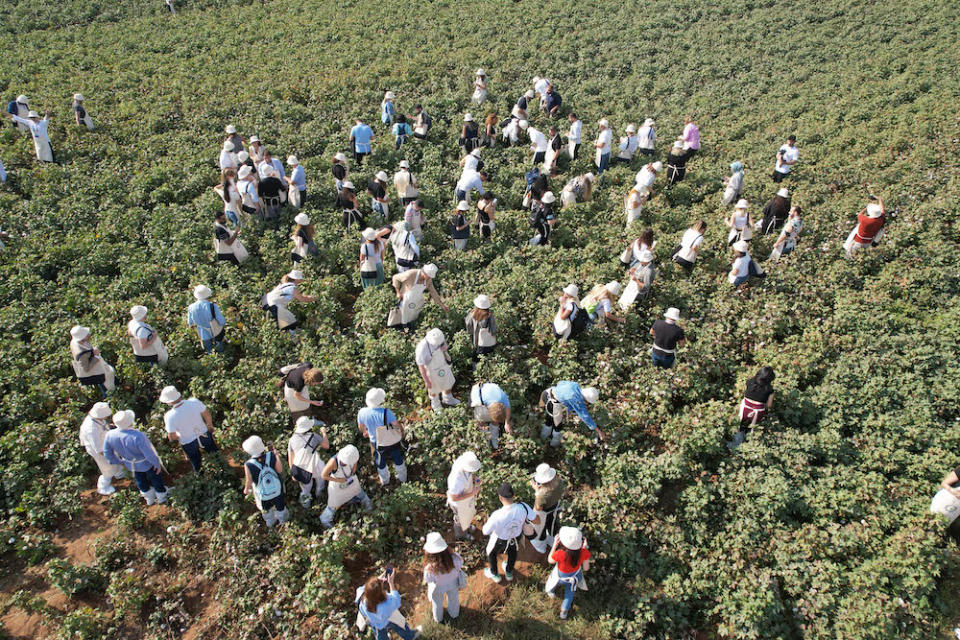Maritas Denim: Rejuvenating Denim with a Regenerative Cotton Strategy

Regenerative agriculture is the gift that keeps on giving. Not only does it improve today’s cotton crop, but tomorrow’s as well—harvest after harvest after harvest.
So when Turkish denim mill Maritaş Denim sought out the most sustainable practices in cotton production to “rejuvenate denim” and clean up its reputation as “one of the dirtiest products in fashion,” the company struck upon regenerative cotton.
More from Sourcing Journal
Mango Joining Regenerative Cotton Brigade With New Collection
Virginia Rep Demands Accountability in Wake of Shein IPO News
“The regenerative agriculture not only decreases the environmental impact but rejuvenates nature and its ecosystems,” said Fatih Kesim, deputy general manager, Maritaş Denim. “Regenerative materials are a key part of climate strategies, especially crucial amid global climate change, which is rapidly depleting water resources. These types of regenerative agricultural methods reactivate the soil’s self-renewal and repair functions, allowing it to sequester carbon from the atmosphere while also generating other ecological benefits such as increased water retention and soil biodiversity.”
This revelation led to the Maritaş Denim Regenerative Cotton project.
A certified regenerative cotton consumer since 2022, Maritaş Denim is also the first denim fabric producer in Turkiye directly supporting regenerative agriculture practices in the Harran region of the country’s important southeastern agricultural region. The cotton production is a joint project with Harran University, Gaziantep University and local registered farmers.

To help spread the word on regenerative farming and how it improves soil health, the company created a hands-on educational event for both local and global customers during its recent harvest event. More than 200 Maritaş Denim customers came to learn first-hand about regenerative farming and regenerative cotton. “We understand how hard the farmer’s day to day life is, and how important their links to nature are, and everyone wanted to share a piece of hope and solidarity,” said Kesim.
Currently, regenerative cotton is just a subset of Maritaş Denim’s full inputs, but the pilot project is the beginning. The company aims to grow the regenerative side of cotton with local farmers, hoping to reach “2.5 million meters of fabric, which would be 10 percent of the mill’s capacity.” The project was realized on 500 decares [123 acres], with a crop yielding cotton for almost 500,000 meters of fabric. Looking to 2024, Maritaş Denim agreed with farmers on a “five-times bigger investment” in the area, bringing it up to 2,500 decares.
Regenerative agriculture is a relatively new concept in fashion. The industry and the public both have a way to go to offer equal attention (and appreciation) to practices like organic cotton, recycled fibers, recycling, upcycling, etc. That said, it is imperative that the world catches up.
“Regenerative practices reduce greenhouse gas emissions and could help trap more carbon than conventional agriculture, which contributes up to 25 percent of the emissions driving the climate crisis,” Kesim said.
Improving soil health and reducing carbon footprint via regenerative farming is one thing, but such environmental advances can be comprised if the resulting cotton has to then be transferred 5,000 or more miles away.
To that end, Maritas Denim is focusing on the phrase “Close Supply” as an important part of the Harran project.
“Denim rejuvenation takes place through the adoption of regenerative farming practices in cotton production. Maritaş Denim adapts regenerative agriculture practices and projects this in our own lands of Southeastern Turkiye,” said Kesim. “We will then take cotton from Harran and produce yarn and fabric and it will significantly decrease the carbon footprint in the production chain.”
For more information on Maritaş Denim’s regenerative cotton program, click here.

